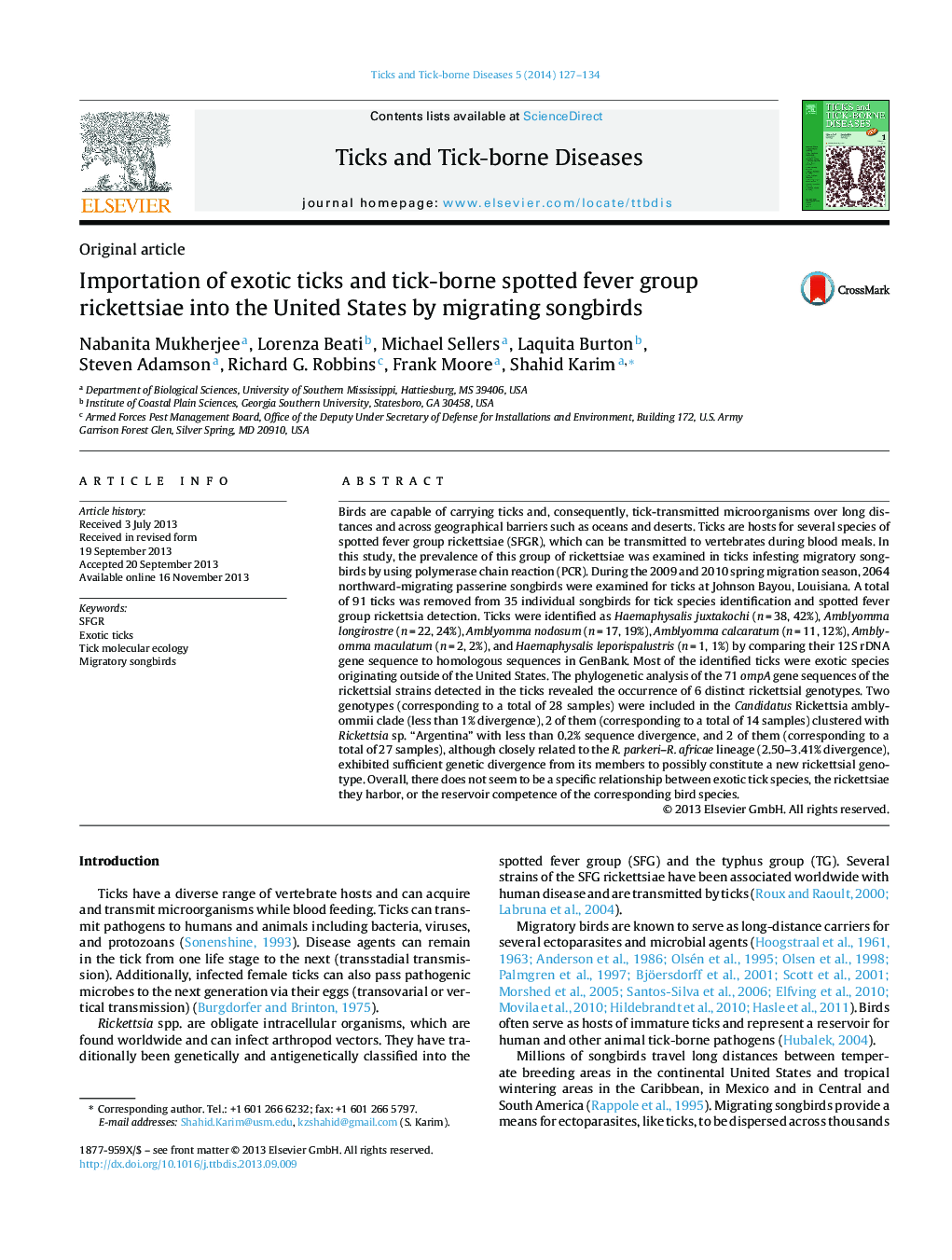| Article ID | Journal | Published Year | Pages | File Type |
|---|---|---|---|---|
| 5807162 | Ticks and Tick-borne Diseases | 2014 | 8 Pages |
Birds are capable of carrying ticks and, consequently, tick-transmitted microorganisms over long distances and across geographical barriers such as oceans and deserts. Ticks are hosts for several species of spotted fever group rickettsiae (SFGR), which can be transmitted to vertebrates during blood meals. In this study, the prevalence of this group of rickettsiae was examined in ticks infesting migratory songbirds by using polymerase chain reaction (PCR). During the 2009 and 2010 spring migration season, 2064 northward-migrating passerine songbirds were examined for ticks at Johnson Bayou, Louisiana. A total of 91 ticks was removed from 35 individual songbirds for tick species identification and spotted fever group rickettsia detection. Ticks were identified as Haemaphysalis juxtakochi (n = 38, 42%), Amblyomma longirostre (n = 22, 24%), Amblyomma nodosum (n = 17, 19%), Amblyomma calcaratum (n = 11, 12%), Amblyomma maculatum (n = 2, 2%), and Haemaphysalis leporispalustris (n = 1, 1%) by comparing their 12S rDNA gene sequence to homologous sequences in GenBank. Most of the identified ticks were exotic species originating outside of the United States. The phylogenetic analysis of the 71 ompA gene sequences of the rickettsial strains detected in the ticks revealed the occurrence of 6 distinct rickettsial genotypes. Two genotypes (corresponding to a total of 28 samples) were included in the Candidatus Rickettsia amblyommii clade (less than 1% divergence), 2 of them (corresponding to a total of 14 samples) clustered with Rickettsia sp. “Argentina” with less than 0.2% sequence divergence, and 2 of them (corresponding to a total of 27 samples), although closely related to the R. parkeri-R. africae lineage (2.50-3.41% divergence), exhibited sufficient genetic divergence from its members to possibly constitute a new rickettsial genotype. Overall, there does not seem to be a specific relationship between exotic tick species, the rickettsiae they harbor, or the reservoir competence of the corresponding bird species.
